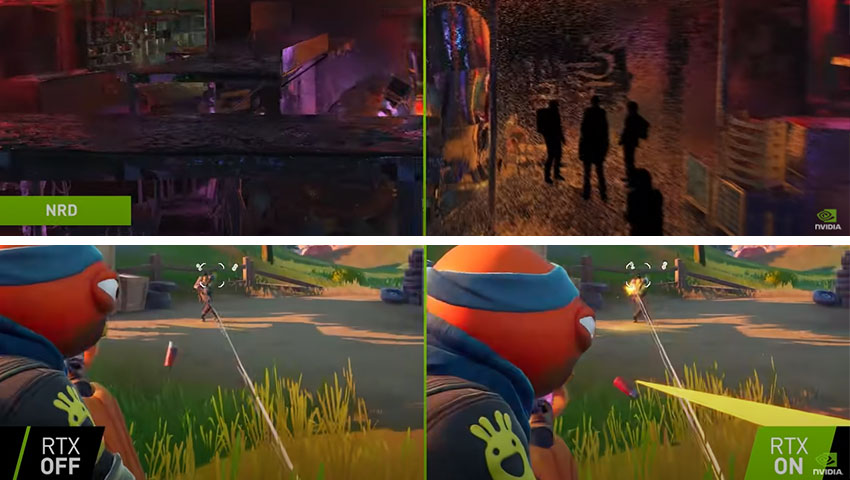Image Processing Technologies for Rendering
This suite of NVIDIA super-sampling and denoising technologies speeds up rendering times and works seamlessly with ray-traced sources, letting you create photorealistic visuals faster than ever.

NVIDIA Rendering Technologies

RTX Path Tracing
Whether you’re rasterizing, tracing rays, or both, this reference path tracer will ensure the physically-accurate lighting produced is true to life in real time. RTX Path Tracing provides you the flexibility to take individual components that suit your needs or take the entire path tracer and integrate it directly into your game engine. This path tracer leverages new hardware in NVIDIA RTX GPUs, allowing you to provide the highest-quality rendering modes with uncompromised performance.
Learn MoreDLSS
NVIDIA DLSS is a neural graphics technology that multiplies performance using AI to create entirely new frames and display higher resolution through image reconstruction—all while delivering best-in-class image quality and responsiveness.
Learn More

Real-Time Denoisers
Remove image noise generated from lighting, shadows, and other ray-traced sources in real time. NVIDIA Real-Time Denoisers (NRD) provides a cleaner and more stable image faster than traditional denoisers. It scales across APIs and is designed to increase the value of other RTX technologies.
Learn MoreGet Started
AI-Accelerated Denoiser
Reduce rendering iteration times with NVIDIA OptiX™, a high-quality post-processing denoiser. OptiX uses GPU-accelerated AI to dramatically reduce the time to render high-fidelity images that are visually noiseless. The quality and performance is expandable through developer training of the denoiser neural network using images provided by their renderer.
Learn MoreGet Started

Explore Ways to Use NVIDIA Technologies
NVIDIA Developer Program
Gain free access to NVIDIA’s performance-focused SDKs, including DLSS, Reflex, and RTXMU. The NVIDIA Developer Program offers the freedom and flexibility to implement NVIDIA SDKs into your own application, as well as other resources such as developer blogs, forums, FAQs, and documentation.
Join the NVIDIA Developer Program

NVIDIA Omniverse
Experience real-time design collaboration and physically accurate simulation with NVIDIA Omniverse™, a platform based on Pixar’s Universal Scene Description (USD) and NVIDIA RTX technology. The multi-layer platform features the powerful Omniverse RTX Renderer—an advanced, multi-GPU-enabled renderer with two modes: RTX-accelerated, real-time ray tracing for lightning-fast performance and near-real-time referenced path tracing for the highest-fidelity results. Technical artists, designers, and engineers can leverage RTX capabilities in pre-built Omniverse Apps, and developers can easily build their own apps based on Omniverse Kit.
Get StartedResources
Developer Forums
Read Documentation

Technical Training
Don’t miss the latest in NVIDIA game development news. Subscribe today to stay in the know.